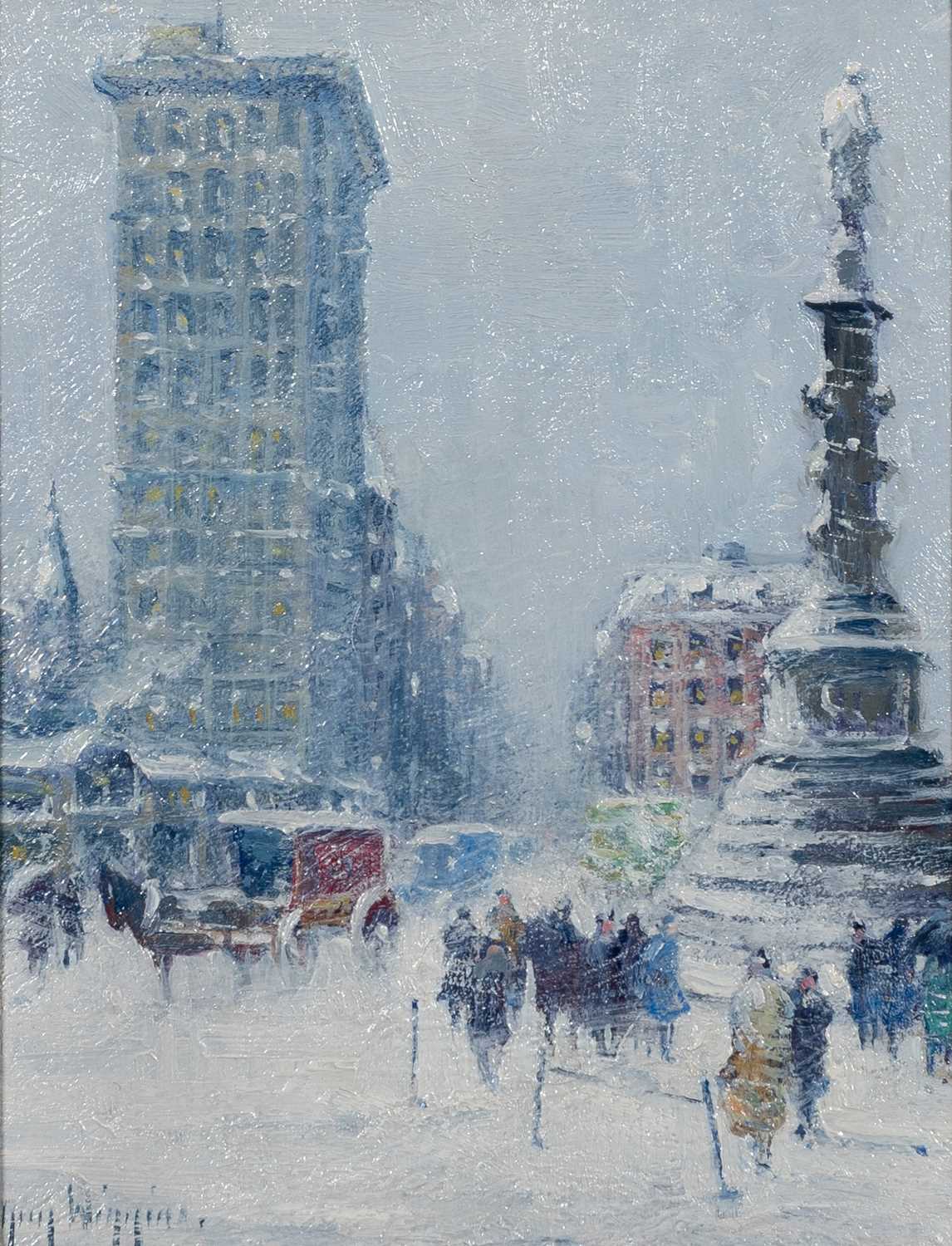
Guy Carleton Wiggins
American, 1883-1962
Guy Carleton Wiggins was a leading figure of American Impressionism, best known for his snow-filled cityscapes of New York. Born in Brooklyn in 1883, he studied under his father, landscape painter Carleton Wiggins, and later at the National Academy of Design, where he absorbed the teachings of Robert Henri and William Merritt Chase.
By age 20, Wiggins became the youngest American artist to have work acquired by the Metropolitan Museum of Art. He spent summers in Connecticut among the Old Lyme art colony, where he worked alongside painters devoted to translating Impressionism into an American practice.
Wiggins gained national acclaim for capturing the atmospheric vitality of urban life—most notably, winter scenes of Fifth Avenue and Washington Square. In 1937, he established the Guy Wiggins Art School in Essex, Connecticut, fostering a community of artists committed to plein air and impressionist traditions.
In a memorable commission, he was granted presidential permission to paint the White House during the Eisenhower administration. His work is represented in major public collections, including the Metropolitan Museum of Art, Art Institute of Chicago, and Smithsonian American Art Museum.